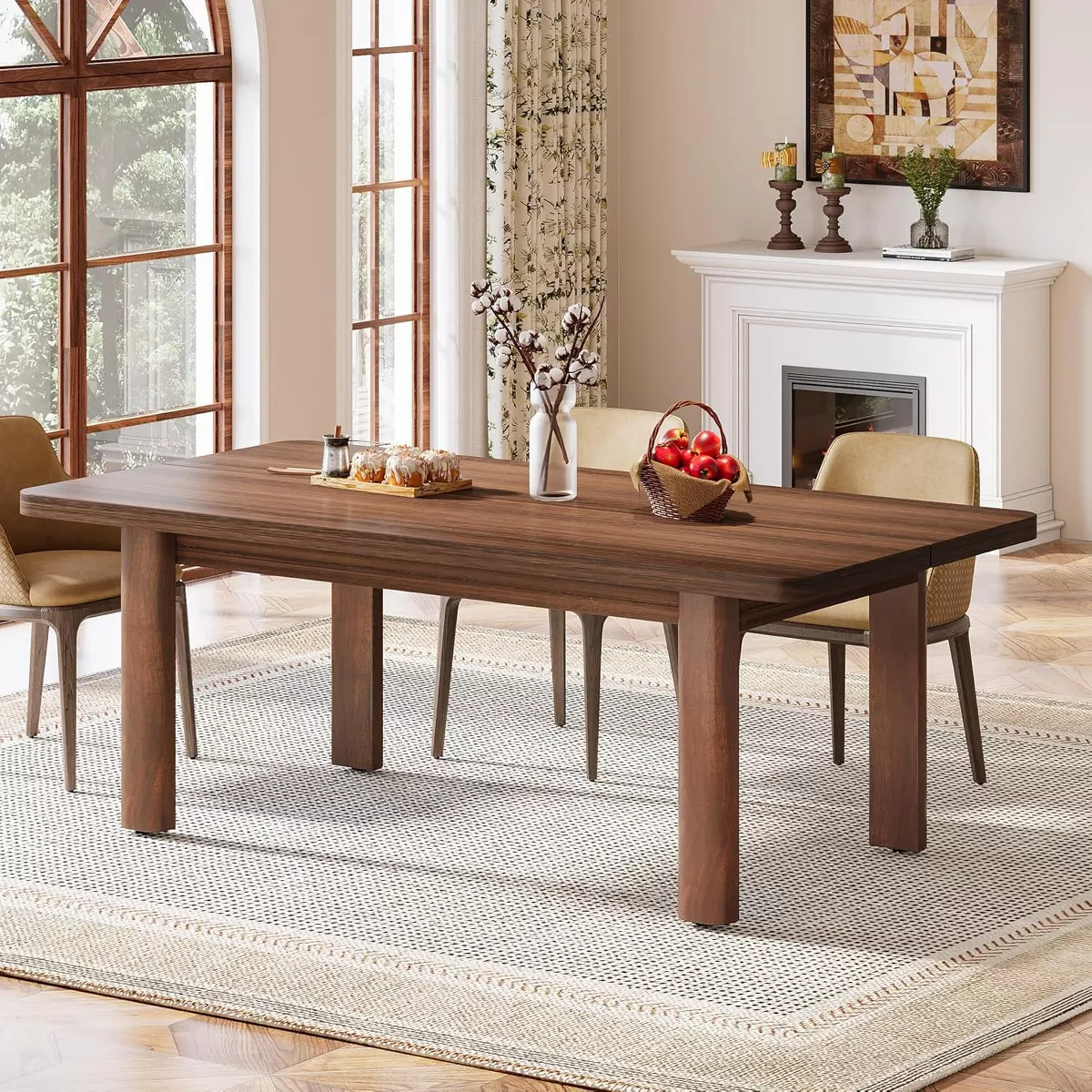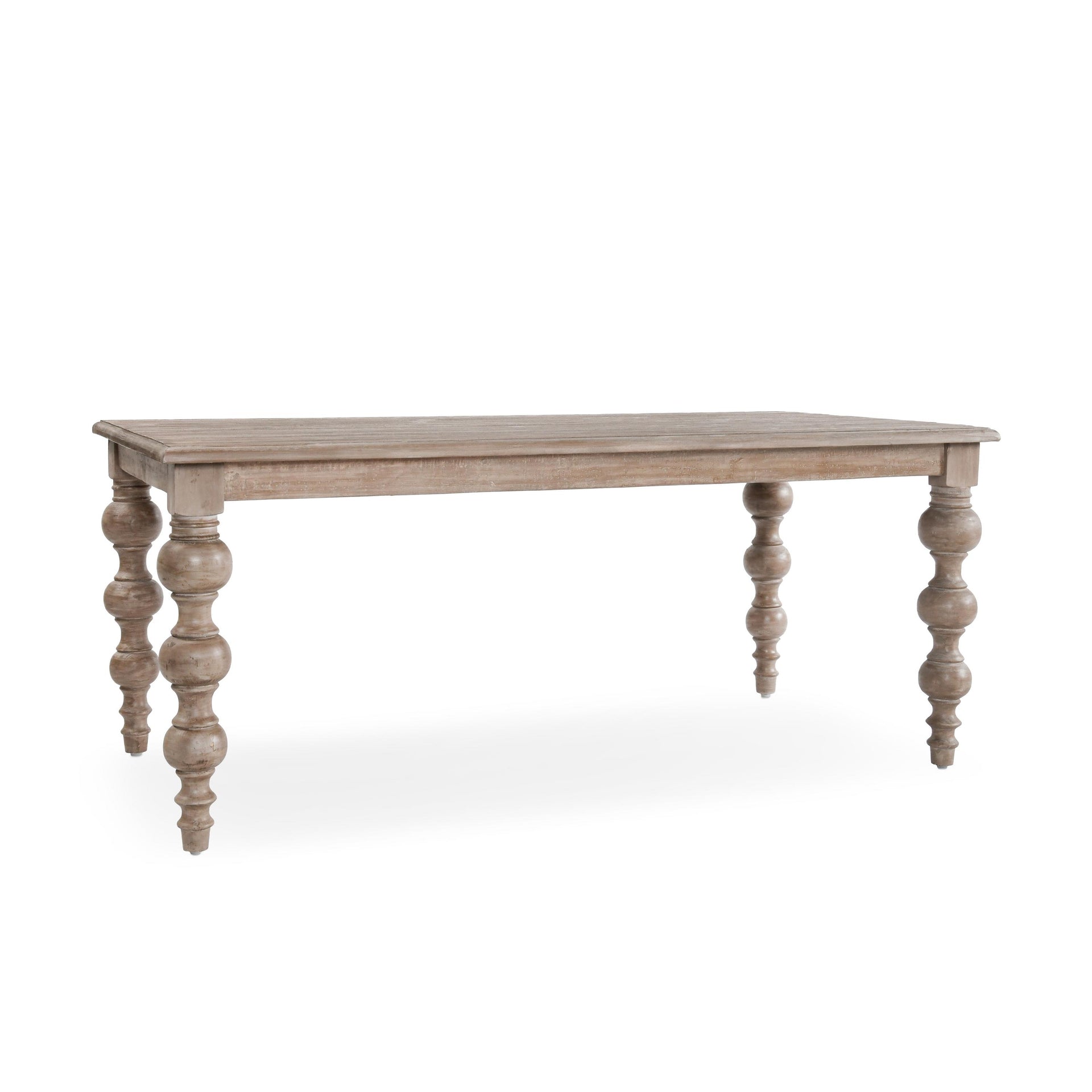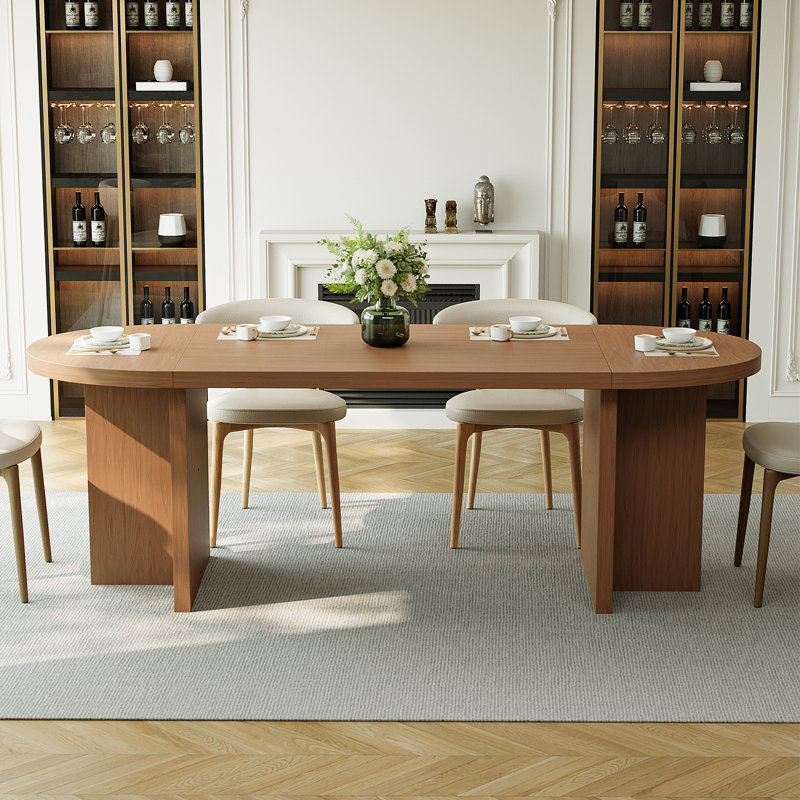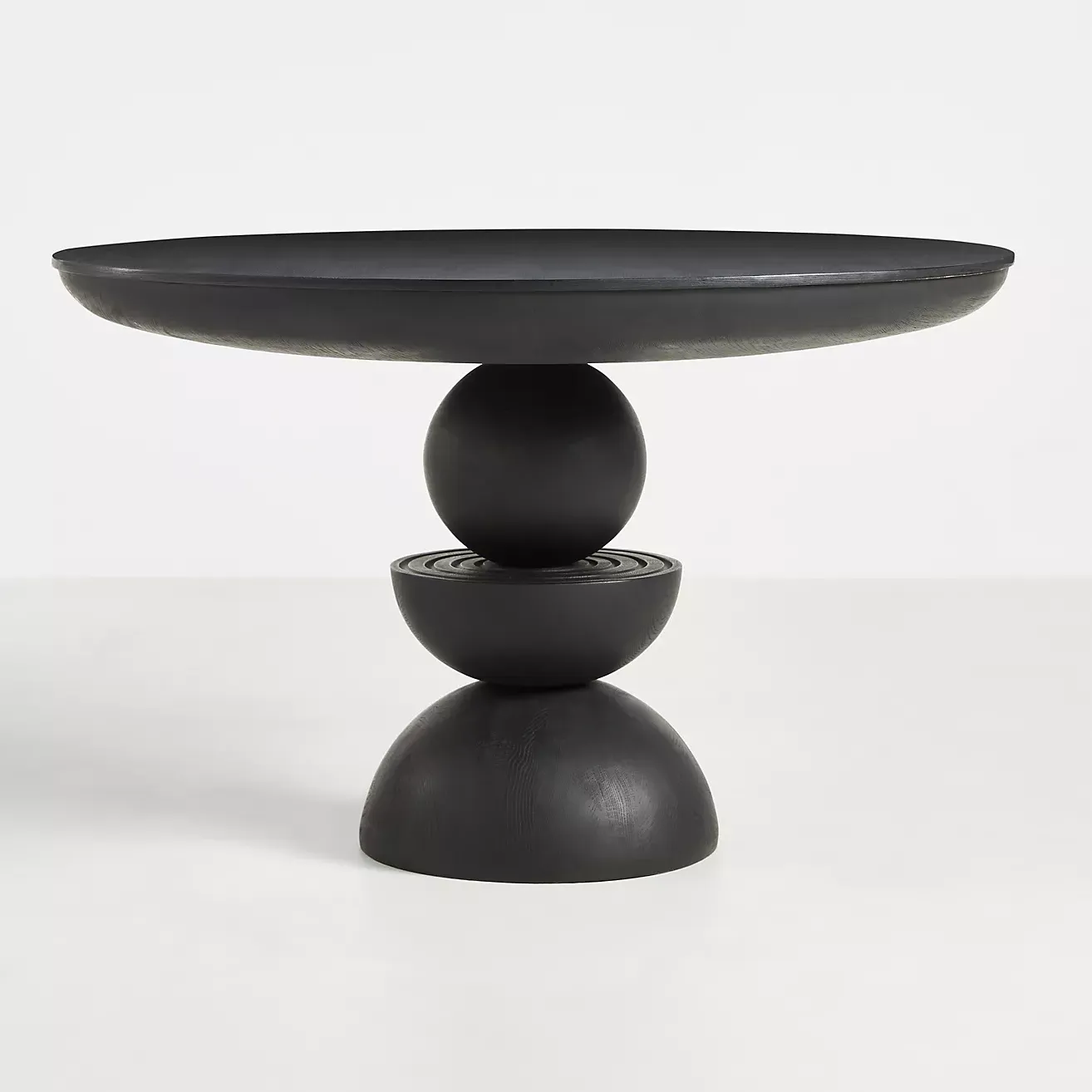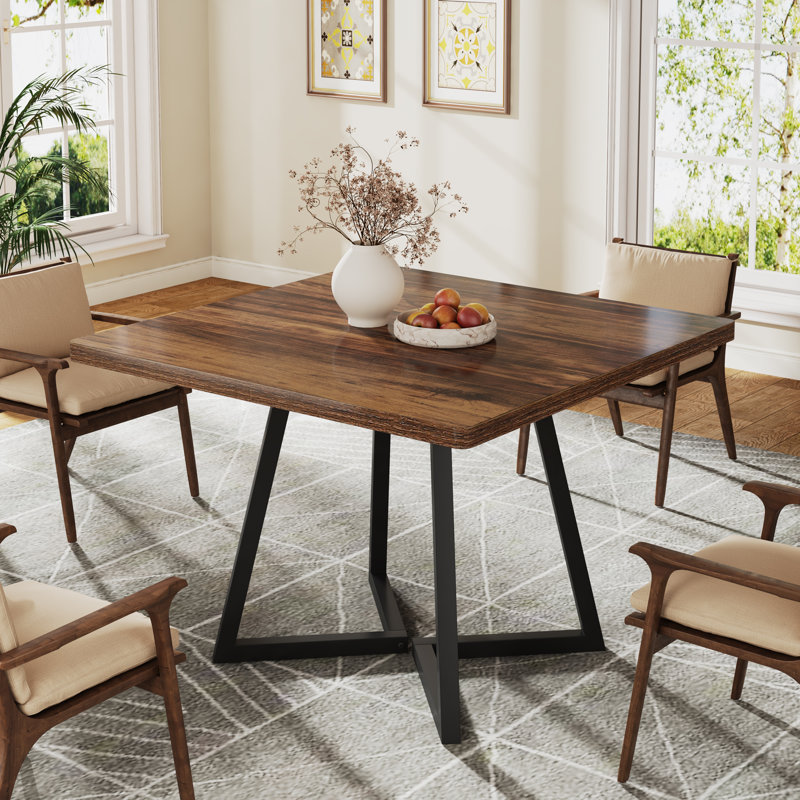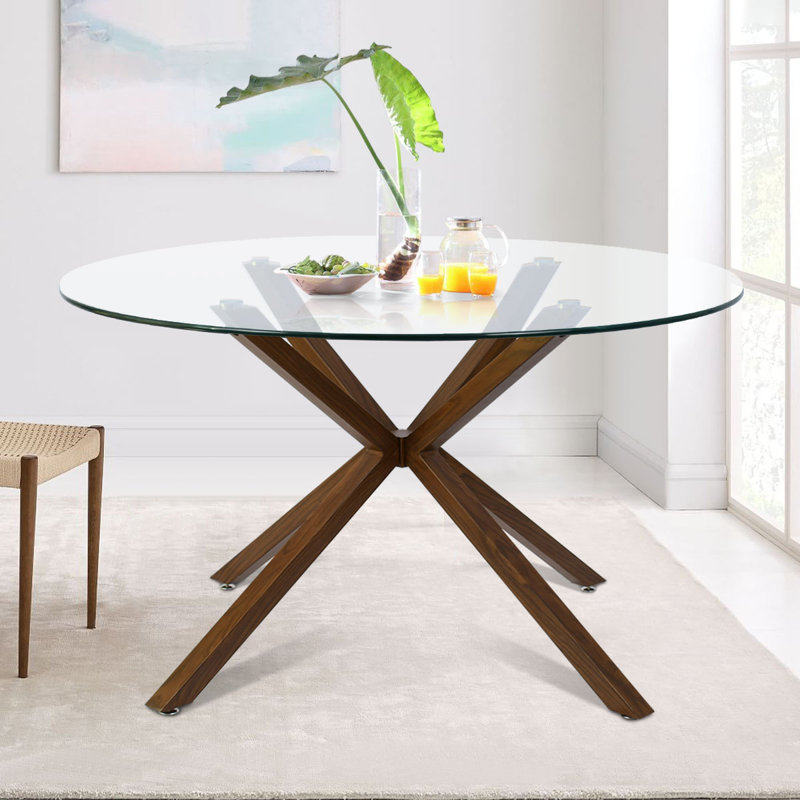What's the Best Dining Table Shape? Designers Reveal What to Choose for Your Space
From rectangular and oval to small circular designs, designers have an easy way to choose the best dining table shape. Here's their advice to get it right

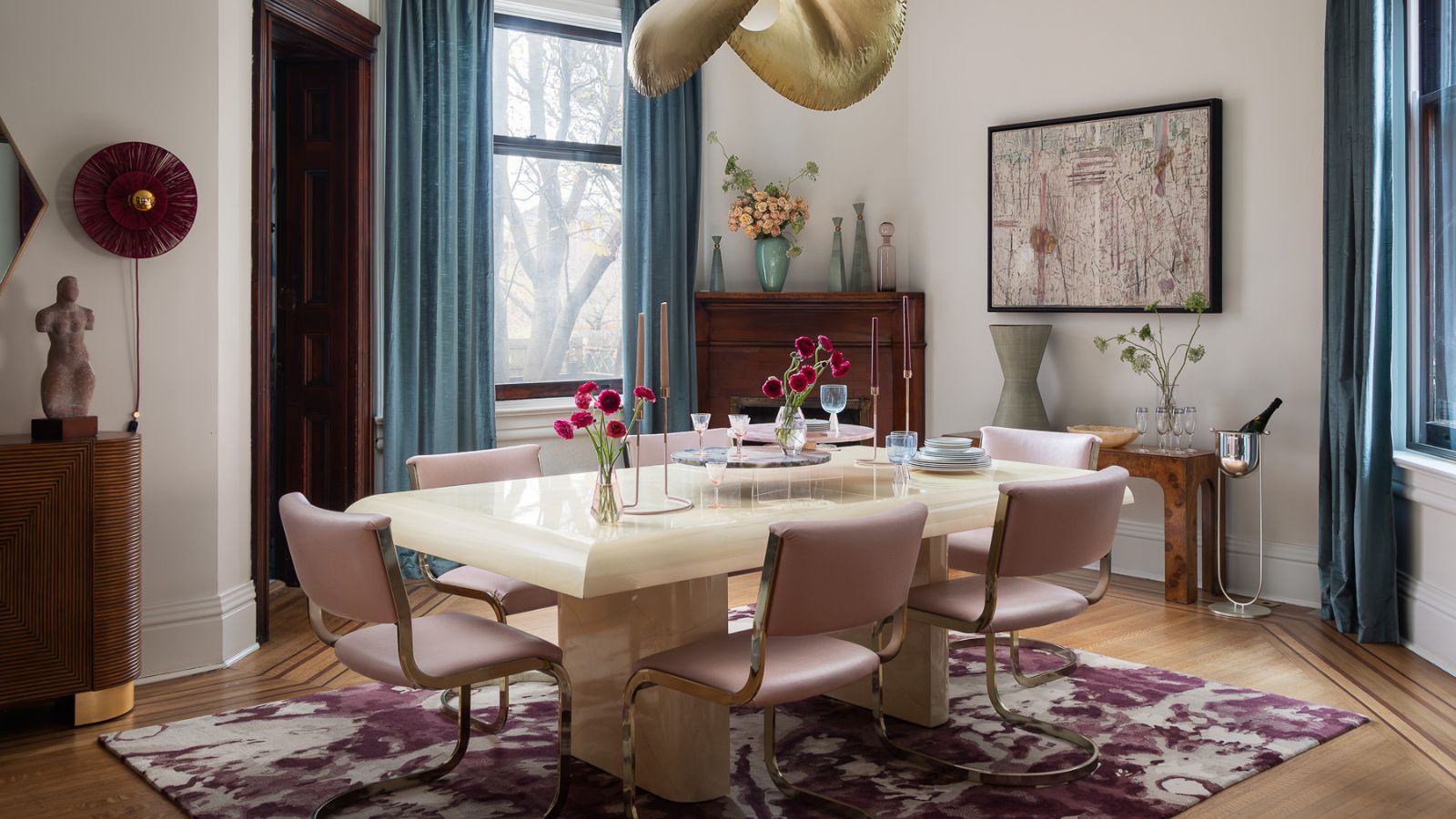
Whether you have a separate dining room, a cozy kitchen eating nook, or an open-plan room, choosing the right dining table shape is key to the room's success, both aesthetically and functionally.
The table is the beating heart of your dining room ideas – and there's more to consider than the style of the furniture, or how many people it can seat, even though these things are still important.
But if you choose the wrong dining table shape, your entire room will feel off, and the flow will feel disjointed and awkward. But it turns out, designers have a fail-safe approach to choosing the right table shape. Here's their advice.
What's the Best Dining Table Shape?
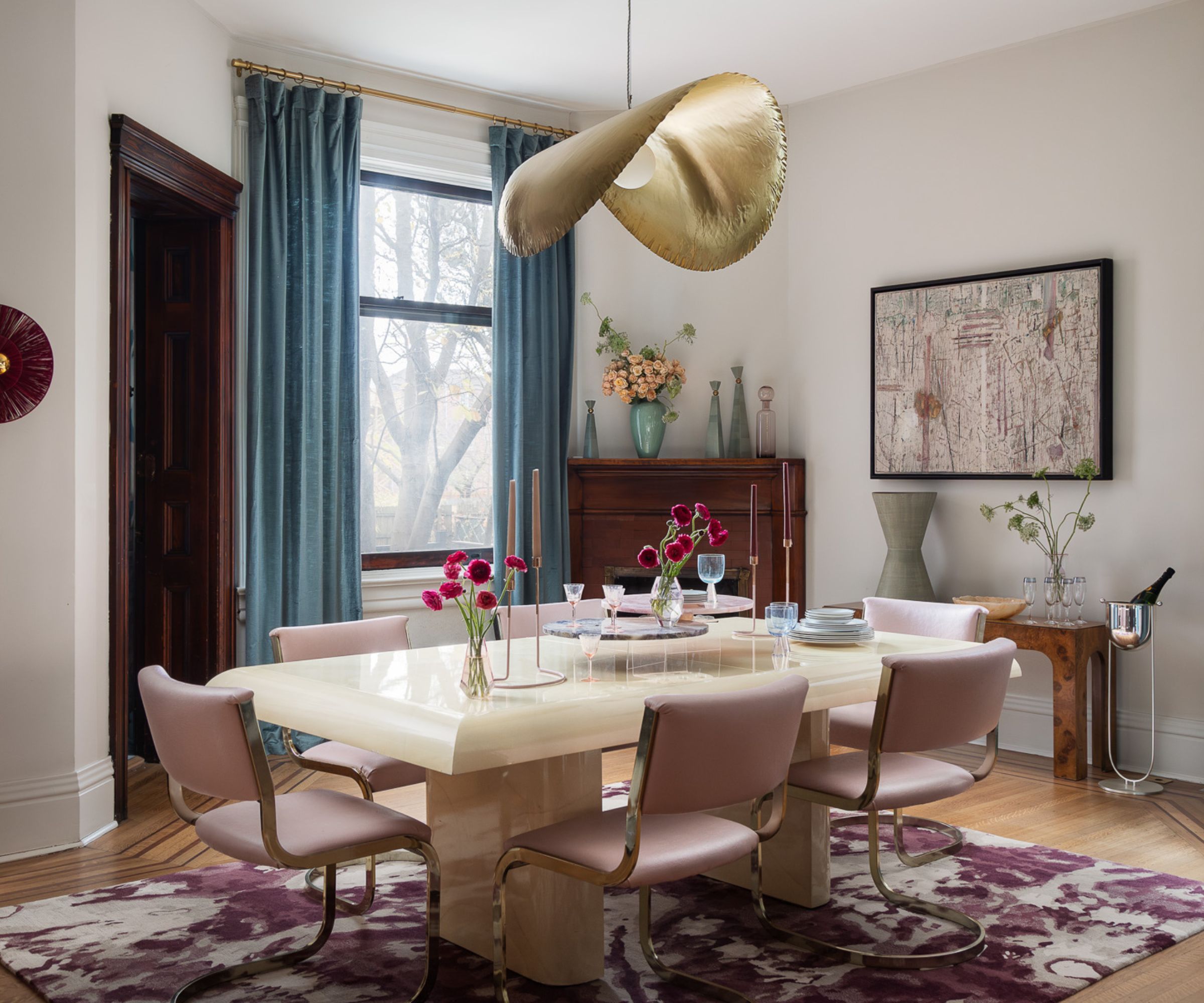
Your dining table really is the heart of the space, dominating the majority of the floor space and the main furniture piece. So, choosing the right shape for your dining room is the most important part of the design process. But it's not as simple as one shape fits all.
'The correct shape of the dining table you select depends largely on the shape of the room you are putting it in. A long, rectangular room should have a long, rectangular or oval table. A square room looks best with a round table,' says interior designer Bethany Adams.
There's more to consider when choosing a dining table than just the shape of the room and table itself. Proportions, scale, and walkway space are all important factors that greatly impact the overall look and functionality of your space.
'Start by considering the dimensions of the room and the number of people you usually want to seat. Ensure there is enough circulation space around the table – at least one meter between the edge of the table and the walls or furniture,' says interior designer Lauren Gilberthorpe.
Design expertise in your inbox – from inspiring decorating ideas and beautiful celebrity homes to practical gardening advice and shopping round-ups.

Bethany agrees, adding, 'You must imagine the chairs pulled out 18" from the table, and then leave a minimum of 24" behind the chairs for people to pass behind for the room to feel gracious, not cramped.'
'Take note that the shape of the room could be affected by built-ins or other large pieces of furniture, and that's what you want to base your table shape on – the leftover floor area,' she adds.
The rectangular dining room above is a great example, which, due to the built-ins and hutch, actually becomes more of a square-shaped room, thus affecting the optimal dining table shape for the room.
Here's a simple and easy-to-follow breakdown of the different table shapes, and when best to use them, depending on the shape and size of your dining room.
A Rectangular or Oval Dining Table

A rectangular dining table is perhaps the most popular design. 'Most dining rooms are rectangular, and it makes sense for the table to echo its surroundings,' says interior designer Kathy Kuo.
If you have a long dining room, a table that follows those same proportions looks the most cohesive and creates the most practical floor and seating arrangement, especially if you want to accommodate more guests.
'Rectangular tables are best suited for spaces where you plan to seat more than ten people, making them ideal for large gatherings or holiday meals. They naturally fit well in longer rooms and provide a sense of formality while still feeling versatile,' says interior designer Tracy Morris.
'Many rectangular tables include leaves, allowing you to extend the length and adjust the size depending on the occasion. This flexibility makes them a timeless and practical choice for anyone who loves to entertain,' she adds. The Azzedine Extendable Dining Table from Wayfair is a great example.
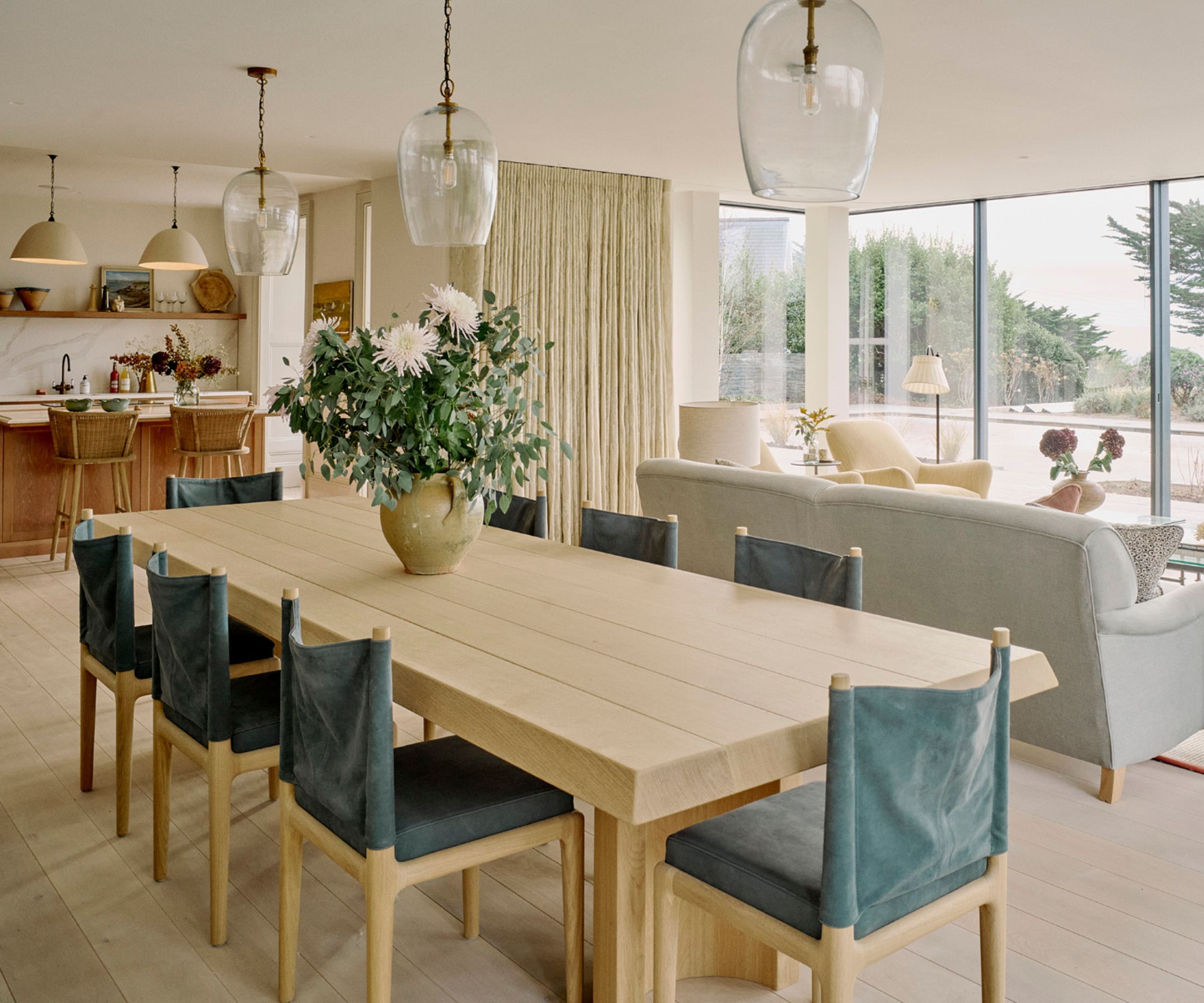
If you have an open plan kitchen, living, and dining area, you'll usually find that a rectangular table works best, creating a more zoned feel and fitting seamlessly into a small section of one great room.
'They work well in rooms with multiple entrances or in open-plan layouts, and they make it easy to place benches along one side for flexible seating,' explains Lauren, who has designed several open-plan spaces with this approach.
'Rectangular tables also provide a clear line for decorative centerpieces, candles, or a runner. In smaller rooms, a rectangular table can also be paired with banquette seating along one wall to save space while keeping the seating comfortable and visually appealing,' she adds, highlighting their versatility.
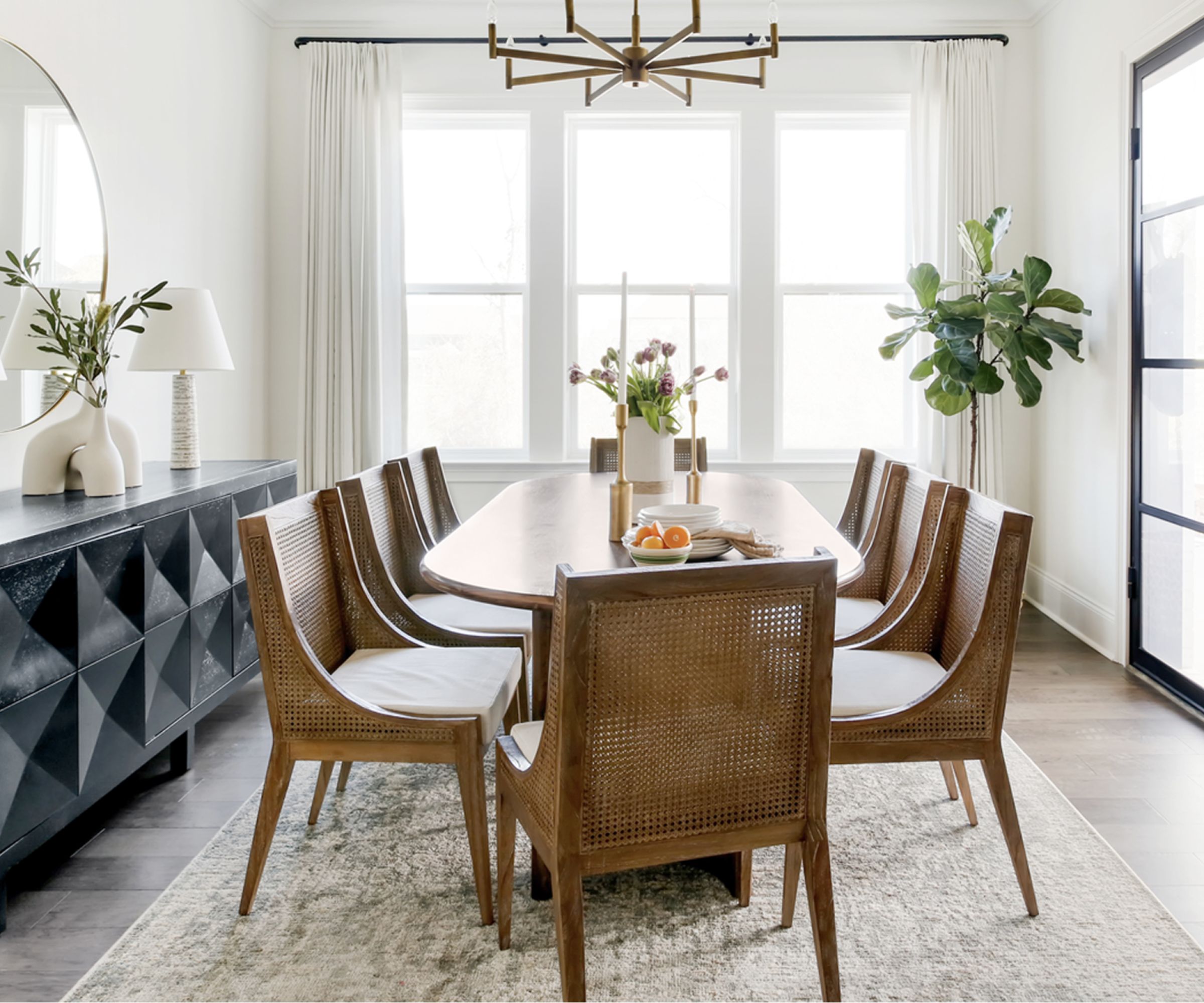
And your dining room area doesn't necessarily have to be rectangular for this table shape to be the best fit, as Bethany explains. 'My own dining room in a 1897 eclectic Victorian has, I kid you not, 9 sides, but as it is longer than it is wide, I've had a rectangular and oval dining table in there and both looked great.'
And she makes a very valid point here – an oval dining table is often suited to the same spaces as rectangular ones because they, too, are long and narrow in form. But there's something about an oval that feels a touch more social, with better visual lines between every diner, and the traditional head of the table is less enforced, creating a more casual atmosphere.
'An oval dining table offers the most comfortable shape for conversation, whilst also being versatile, working well with a varied number of seats. This shape also lends itself beautifully to different styles of architecture without interrupting the flow of the room,' says Fred Horlock, design director at Neptune.
'Oval is a lovely option between round and rectangular, and it’s the dining table shape I opted for in my petite NYC dining room. I love the elegant contours and versatility of its gently curved silhouette,' adds Kathy.
A Round or Square Dining Table

Lulu and Georgia's Beasley Round Dining Table creates a more intimate, casual feel in this space.
If you're dining room doesn't meet the criteria for a rectangular or oval table, it's time to consider a round table. Often smaller, they are best suited to more compact rooms, smaller eat-in areas, and even spacious but square dining rooms, as it helps to level out the proportions of the room.
And Tracy agrees, explaining that, 'Round tables are perfect for seating eight or fewer guests, as they naturally encourage conversation and connection without anyone feeling left out.' And, as Fred notes, 'Round tables are easier to move around, making them great options for smaller, awkward spaces or corners.'
'They also work beautifully in square rooms, where the curved edges help soften the space and break up all the right angles. The shape feels inviting and relaxed, making it ideal for both everyday meals and more intimate gatherings. It’s a timeless choice that brings people together in the best way,' Tracy adds.
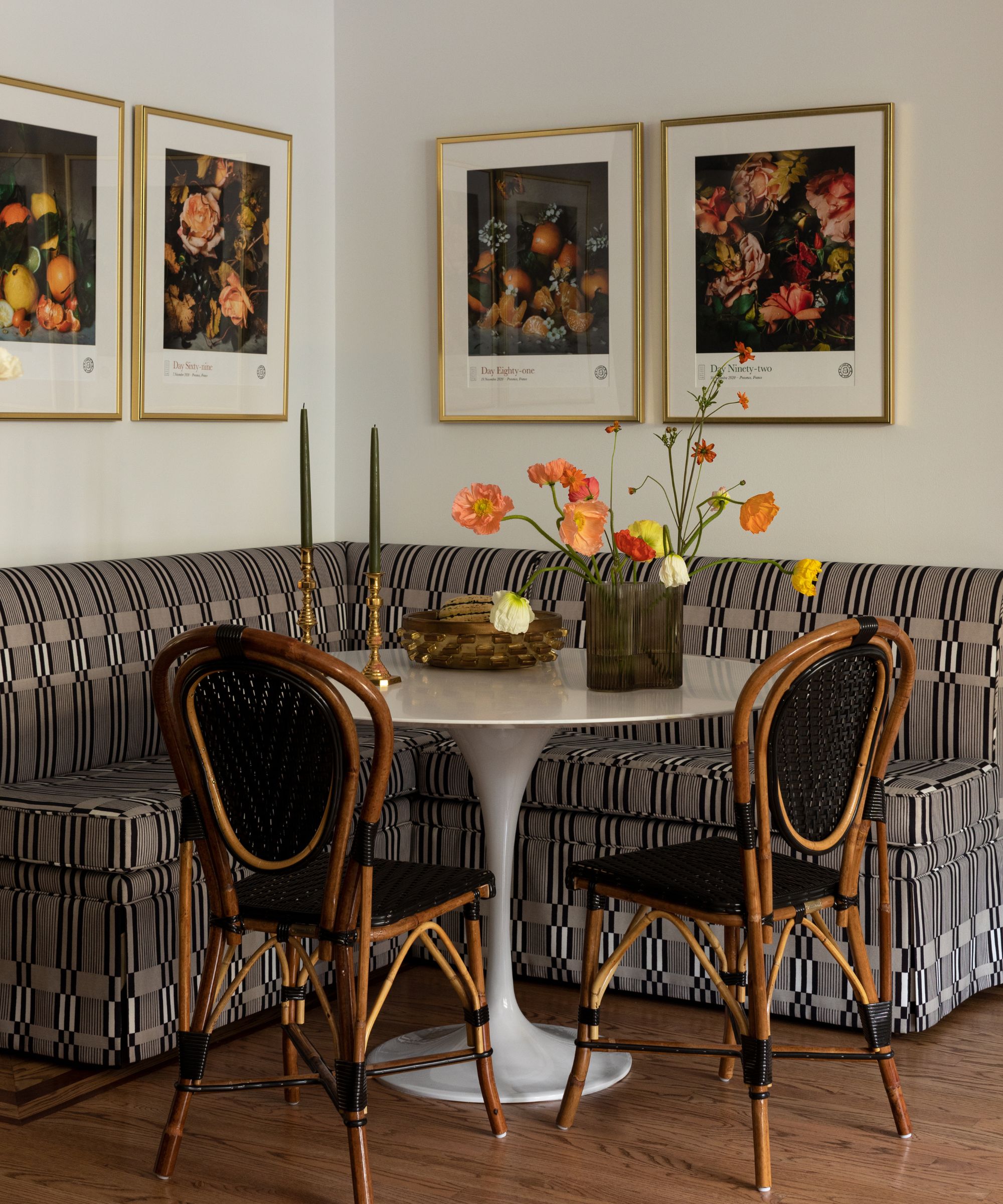
It's the intimacy and conversational layout of a round table that makes them so appealing. Especially when you're dining with smaller numbers, a round table removes the divide from one end of the table to another, so everyone feels involved.
'Round tables are ideal for smaller rooms or more intimate settings. They encourage conversation because everyone is at an equal distance, and there are no “ends” of the table, which can make a space feel more relaxed,' explains Lauren.
'They also work well in a bay window or cozy dining nook, where a rectangular table might feel too formal or imposing. Round tables can also pair beautifully with a curved banquette, creating a snug corner for seating that maximizes both comfort and space.'
But they are also perfect for a square-shaped dining room, and it's in these circumstances that you have the choice between a round or a square table. 'Square tables can look beautiful in smaller, more balanced spaces and feel modern when styled with clean lines,' says Tracy.
Choosing the right dining table shape for your home has never been easier. Work with the shape and layout of your dining room, and consider the flow and atmosphere you want to recreate – your dining room furniture really is crucial to the success of your design.

I’ve worked in the interiors magazine industry for the past five years and joined Homes & Gardens at the beginning of 2024 as the Kitchens & Bathrooms editor. While I love every part of interior design, kitchens and bathrooms are some of the most exciting to design, conceptualize, and write about. There are so many trends, materials, colors, and playful decor elements to explore and experiment with.
